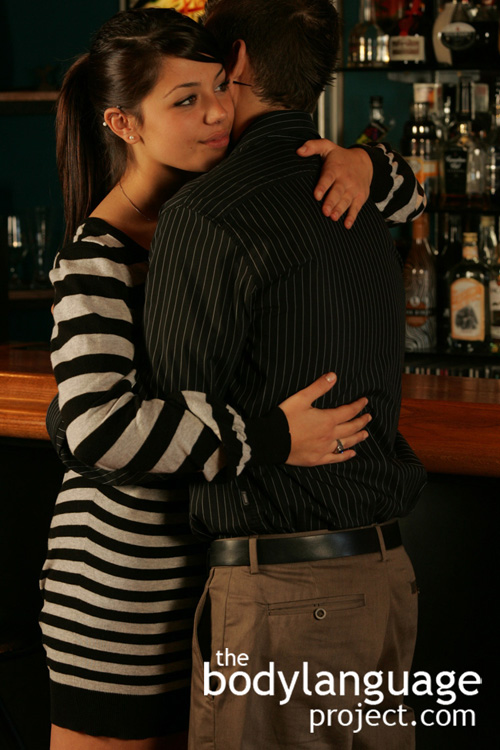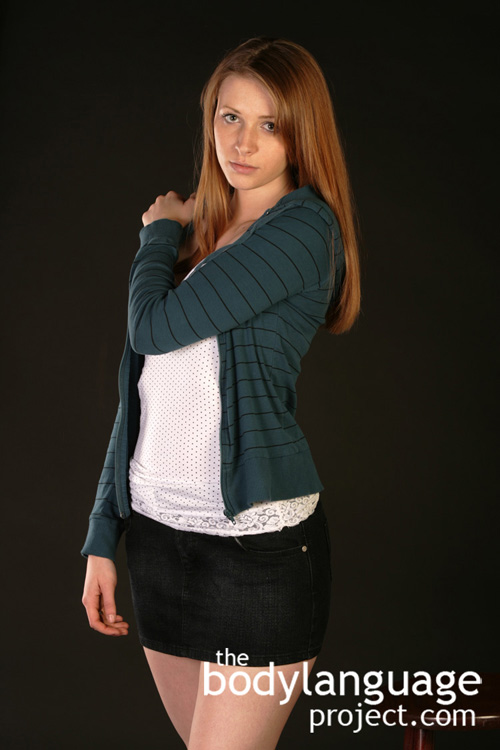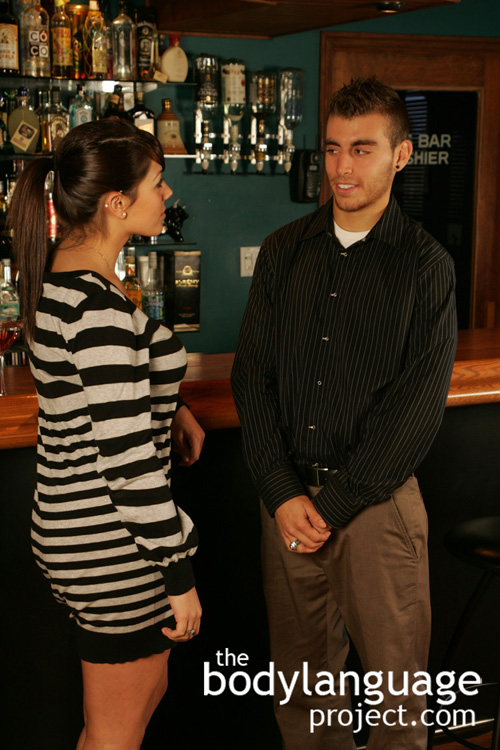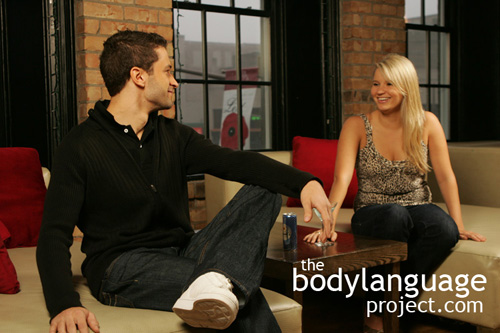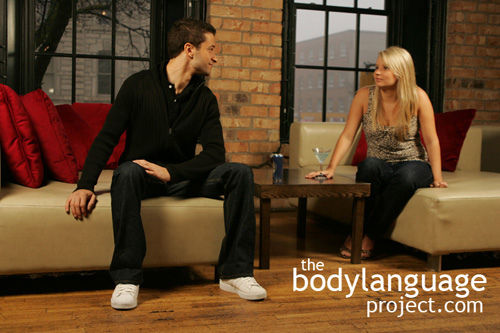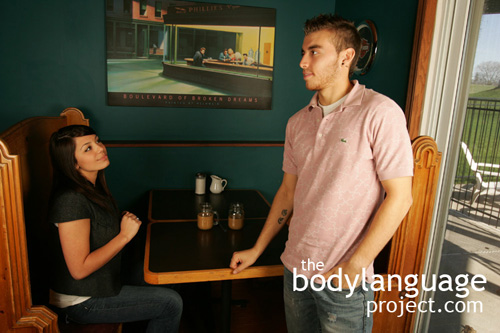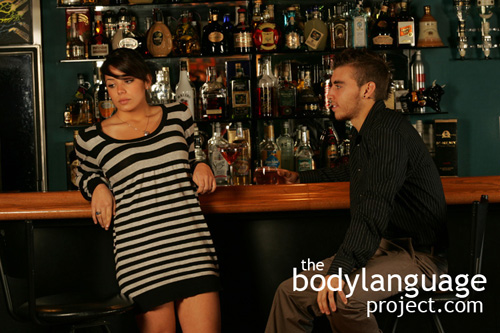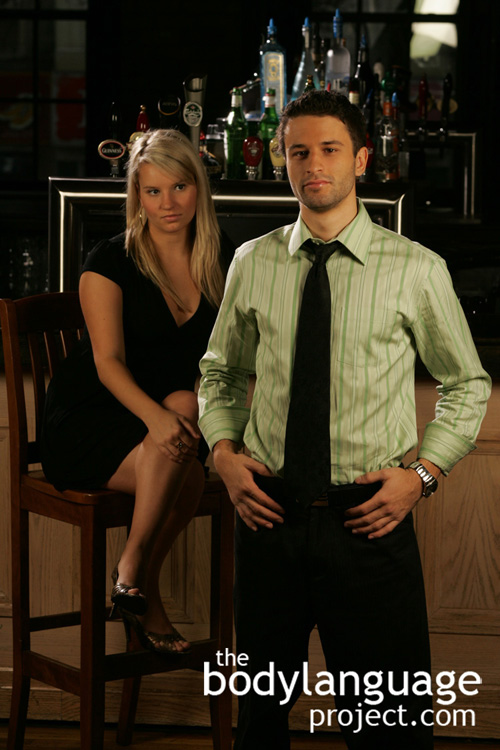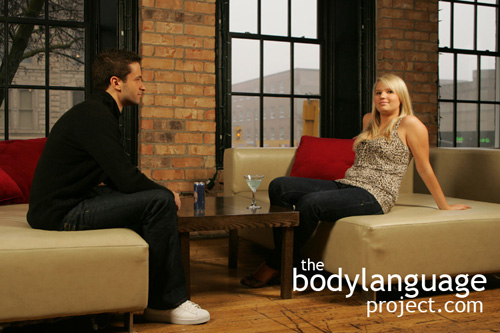
Puffing out the chest can give the bosom the extra bit of attention needed to seal the deal. Like most signals, this one happens subconsciously.
Women naturally have wider hips than men in order to accommodate childbirth and it is the exaggeration of the differences between men and women the makes them sexy. Women emphasize their hips with a walk called the “parade” which happens when a woman walks with exaggerated swinging or rolling of the hips, back arched, stomach flat, breasts protruding, and head held high. Studies show us that women out of committed relationship naturally walk in this manner to attract attention. Out of consciousness the parade is not overt or striking, but now that you understand the characteristics, you can watch for it. Women can also roll their hips while standing drawing attention to their pelvic region. The gesture might be accompanied by a sideways glance and slightly parted wet lips which could be unconsciously exaggerated by saliva or lipstick.
The hip emphasis posture is pervasive in fashion and advertising. We see women slouching to one side forcing their hips out to emphasize their curves, or walk in an exaggerated way, bouncing their hips up and down as if on a pendulum. Picturing this parade or “cat-walk” in the nude and you get the sense that there is an obviously hypnotic purpose to the method. Because the hips move about a center pivot, the eye is drawn front and center to the woman’s genitals which act as a beacon.
The little black dress is a perfect example that emphasizes the hip-to-waist-ratio differences in women. Studies show us over and over again that men prefer a hip-to-waist ratio of about seventy percent. That is, men prefer women who’s waist is thirty percent smaller than their hips. Women on the other hand, prefer men’s hip-to-waist ratio to be about ninety percent or in other words, their hips are only ten percent larger than their waste. This stems from the fact that it makes them better athletes, evolutionarily linked to their ability to catch food. Female athletes, particularly world class runners, also tend to carry low hip-to-waist ratios. Research also tells us that the waist is the last place women tend to add fat so as to preserve the sexiness of their curves. These changes happen rapidly after about age eighteen, where fat is added to the buttocks and legs but stays off the stomach until much later in life at around menopause. Only with great diligence are women able to keep their stomachs flat after their childbearing years. Once again though, after childbirth the area tends to be most resilient to fat deposits and the legs and butt tend to hold the most amount of fat, serving only to further emphasize the hip-waste ratio.
Having said this, digitally altered images and women who naturally carry a higher hip-to-waist ratio, are often seen as even more alluring. It is a play on the minds of men where everything is better if bigger, and if some is good, more is best. When it comes to men, if something is worth doing at all, it’s worth overdoing! The size of women’s breast is a prime example, and came about through evolution specifically to attract and keep the attention of men. Women are rare in the animal kingdom as they have what scientist refer to as permanently swollen breasts, or breasts that are large outside of lactation, and seem to have absolutely no desirable function at all, but as a sexual selection characteristic. Interestingly though, we aren’t alone in terms of exaggeration preferences, for example, mother birds who’s eggs have been swapped for larger ones (of another species), even freakishly large ones, will tend to sit on them longer and more frequently, even sometimes abandoning other eggs in their clutch. So it appears that even mom’s like more of things, especially when some of that things is great, more is seen as greater. Universally however, men do prefer the golden hip-to-waist ratio of seventy percent and tend to prefer a c-cup sized breast which amounts to about five percent of women’s total body mass – if you really want to get technical! The point being that exaggeration tends to mesmerize and sexual body language is no different.

